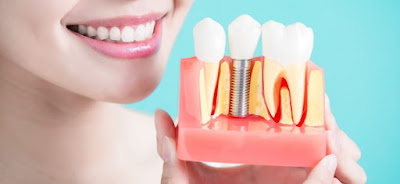Orthodontics helps in teeth straightening and proper alignment, repairing the crowded and crooked teeth, cross and deep bites and various other flaws of the teeth and jaw. With the speed at which technology progresses nowadays, it should come as no surprise that the field of orthodontics is much different than it was a decade ago. The days of frequent hospital visits, one-size-fits-all braces and painful adjustments are thankfully long behind us.
Today’s orthodontics offers a wide range of customized teeth-straightening options. People can now choose from different types of braces, including metal braces, ceramic braces, lingual braces, self-ligating braces and clear aligners. The traditional metal braces still remain a popular option for kids because they are affordable and effective, and now they can be tailored to showcase your favourite color, express your sense of style or to show support for your school or team.
Maybe you don’t want others to see you are having braces. Maybe you don’t want to make a statement with your braces. There are a few other options available and the popular selection is ceramic braces. While not completely invisible, the ceramic braces go well with your tooth enamel, making them less visible. These are both good options for teens who may be embarrassed about having braces or adults wanting to maintain a professional image at the office.
When comparing this two different orthodontic treatment options currently available, there’s one big question that will be lingering in your mind: how are metal braces and ceramic braces different? While these two treatment options share many similarities, they also differ on quite a few things including procedure, aesthetics and cost.
What are metal braces?
Traditional metal braces are the most common and effective orthodontic treatments available. Metal braces have the advantage of usually being the least expensive type and they have been around for about 100 years. This fixed orthodontic treatment helps out to straighten teeth and correct bad bites using a series of stainless steel brackets, thin metal wires and subtle or brightly coloured bands. Although they have evolved over the time to be smaller and more effective, they are still the most noticeable.
Regardless of all the advances in orthodontics technology & the new braces & aligners products, traditional metal braces will always be an option. The major reason for this is due to the procedure of traditional metal braces as it can be used to treat certain severe or complex cases. The sturdy nature of metal braces means that they can execute more complex tooth movements, making them the popular choice in many cases. If some of your teeth need to be moved quite far with the objective of giving you a straight & aligned smile, metal braces may be the only choice…at least the first choice. It is possible to start your orthodontics treatment using metal braces to complete complex tooth movements & then switch to other types to bring teeth into their final position. The metal braces may be still the right option for you if you don’t care about how visible your braces are. If you don’t mind people noticing, but you wouldn’t prefer metals, there are other options to consider.
What are ceramic braces?
As the name suggests, ceramic braces are same as the metal braces except that they’re made out of a translucent, clear or tooth-colored materials, and are designed to blend in better with your natural tooth color. Ceramic braces are a result of extensive dental research and their obvious advantage of ceramic braces is that they blend in with your tooth enamel.
When paired with clear brackets and frosted or white archwires, their appearance is almost invisible. They’re often referred to as clear braces and are a popular choice among self-conscious adults which offer the same reliability of standard metal braces, but with a more cosmetically pleasing look. Ceramic braces share a design with their metallic counterparts and they, in fact, function in the same way, while treatment times may be longer due to the extra friction in the system. However, they’re able to treat the same type of complex malocclusions and help correct bad bites.
Why get ceramic braces?
- Ceramic braces are particularly popular among adults who are looking for a much more discreet and attractive treatment option especially if they use a colored archwire. Can you imagine a year of photos with metal in your mouth? Not picture-perfect! Right?
- Ceramic braces are tougher than they sound. The application and design of ceramic braces have been refined to make sure maximum durability. However, it is significant that you find a dentist who offers the highest quality available.
- For those who have a metal allergy but need the orthodontic treatment to complete complex tooth movements, then ceramic braces may be a better option.
- Ceramic braces work faster than invisalign(another popular option for discrete alignment) while offering an almost parallel level of discretion.
- Latest ceramic braces don’t stain easily. The original ceramic braces when the orthodontist first began to use ceramic braces in 1980 were made of plastic and could stain easily. Thanks to advances in technology, there are comfortable ceramic braces that are clear and less susceptible to discoloration.
- Do you want to add a little bit more flair to their braces? With colored bands connecting their brackets, you can make the mouth gear look truly flamboyant. This’ll make the mouth pop and certainly leave an impression. Kids will like it. They can use colored bands to celebrate a holiday or coordinate with their outfit!
- When your treatment is finished, ceramic braces are easy to remove than metal braces. There are technological advances for removing clear ceramic braces and less likely to leave demineralized tooth enamel behind.
- Ceramic braces cause less discomfort and irritating than other options. In general, the experience with ceramic braces is a lot more bearable than their metal counterparts.
Do ceramic braces cost the same as metal braces?
Traditional Metal braces come at a price which is really cheaper than the ceramics. Due to the varying cost of materials, ceramic braces generally cost more than their metal counterpart. Though, the differences between the two treatment options are not really that significant. You may have braces for anywhere between 6 months and two years which depend on the modifications required. The period of your treatment is determined on complexity rather than by the type of appliance used.
Closing thoughts: Although being same in function and efficiency, braces of both the category have pros and cons making them alternatives of each other, though it mostly depends upon one’s own discretion with which type of brace suits the best. Moreover, these are by no means the only treatment options available and if you want to make an informed decision about which will best suit your budget and needs it is best to make an appointment with an orthodontist.
Services at Dental Works Clinic, Whitefield, Bangalore include everything from General Dental Care to Complex Dental Rehabilitations. The clinic functions on the concept of providing expertise of the various specialities in Dental treatments Whitefield and dental surgery to provide the top most dental care to the patients. The doctor is known to have extensive dental training and to treat all dental problems with dedication, efficiency and precision. Those who are concerned about the appearance of metal braces, then the orthodontist also offers ceramic dental braces in Bangalore with affordable ceramic braces cost Bangalore. At Dental works clinic, they specialize in wide variety of Teeth braces in Whitefield.
Visit Us : whitefielddentist.com
Mail Us : dentistrybangalore@gmail.com
Book Your Appointment Here : whitefielddentist.com/book-appointment




















